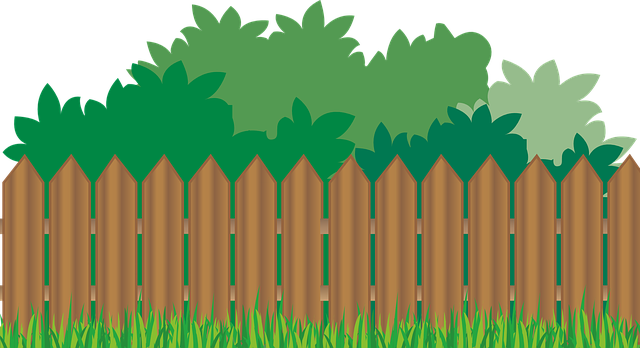Fence Staining and Sealing: A Comprehensive Guide to Revitalizing Your Wooden Fences
A well-stained and sealed wooden fence not only enhances the aesthetic appeal of your outdoor space but also protects your investment. This comprehensive guide delves into the art of fence staining, covering everything from understanding the benefits and choosing the right stain to application techniques and sealing for maximum protection. By following these expert tips, you’ll learn how to transform your ordinary fence into a stunning, durable feature that complements your home’s exterior.
- Understanding Fence Staining: Benefits and Types
- Preparation: Getting Your Fence Ready for Staining
- Choosing the Right Stain: Color and Finish
- Application Techniques: Brushing, Rolling, or Spraying?
- Sealing for Protection: The Final Step
- Maintenance Tips: Keeping Your Stained Fence Looking New
Understanding Fence Staining: Benefits and Types
Fence staining is a popular method to enhance the appearance and protect wooden fences. By applying a coat of stain, you can transform an ordinary fence into a beautiful and durable feature for your outdoor space. Understanding the benefits and various types of fence stains is crucial in making an informed decision for your fencing project.
The primary advantage of staining is its ability to safeguard wood from environmental elements like UV rays, rain, and humidity, which can cause fading and rot over time. Stains create a protective barrier, preserving the fence’s beauty and longevity. Different stain types offer diverse options: semi-transparent stains allow some wood grain to show through, providing a subtle enhancement, while solid or opaque stains offer complete coverage, transforming the fence into a vibrant, customizable color.
Preparation: Getting Your Fence Ready for Staining
Before applying any stain or sealer, proper preparation is key to achieving a long-lasting, high-quality finish. Start by thoroughly cleaning your wooden fence to remove any dirt, dust, mold, or mildew buildup. Use a pressure washer or a stiff brush with mild detergent and warm water to ensure a deep clean. Once cleaned, inspect the fence for any damaged or rotten sections. Repair or replace these areas to prevent further issues. Sanding the fence slightly can also help to roughen the surface, allowing the stain to adhere better. Make sure all tools and equipment are prepared, including brushes, rollers, or sprayers suitable for staining.
Choosing the Right Stain: Color and Finish
When choosing a fence stain, color options are vast, ranging from natural woods to bold, vibrant hues. Consider your fence’s existing color and desired aesthetic—a light, natural finish can enhance the wood grain, while darker stains create a more dramatic effect. The type of finish also matters; semi-transparent stains allow more light penetration, showcasing the wood’s natural beauty, whereas solid or opaque stains offer complete coverage for a different look.
Match your chosen color with the fence’s function and surrounding environment. For instance, lighter shades can reflect sunlight in hot climates, while darker options blend better with lush, green landscapes. Remember that colors may appear differently under varying light conditions, so test samples before committing to a particular shade.
Application Techniques: Brushing, Rolling, or Spraying?
When it comes to applying stain and sealer to your wooden fence, there are several techniques you can employ. The most common methods include brushing, rolling, and spraying. Each has its advantages and is suited to different situations.
Brushing is ideal for smaller, more intricate areas or fences with uneven surfaces. It allows for better control over the stain’s distribution and is less likely to overspray or pool. Rolling is efficient for larger, flat surfaces as it provides even coverage without leaving streaks. Spraying offers the fastest application time and is excellent for extensive fence projects, ensuring a uniform finish. The choice ultimately depends on the fence’s size, shape, and your personal preference for control and speed.
Sealing for Protection: The Final Step
Sealing is the final step in fence staining and a crucial process to ensure the longevity of your wooden fence. It acts as a protective barrier against the elements, preventing water, UV rays, and other environmental factors from penetrating the wood. A good seal not only preserves the color but also fortifies the fence against rot, mold, and mildew growth, which can weaken the structure over time.
Choosing the right sealer is essential for optimal protection. Water-based or oil-based sealers are common options, each offering distinct advantages. Water-based sealers are easy to apply, fast drying, and emit fewer odors, making them a popular choice for residential properties. Oil-based sealers, on the other hand, provide deeper penetration, enhanced durability, and better resistance against UV rays, making them ideal for harsher climates or areas exposed to direct sunlight for extended periods.
Maintenance Tips: Keeping Your Stained Fence Looking New
Regular maintenance is key to keeping your stained fence looking its best for years to come. After initial staining, sealing every 1-2 years with a high-quality water-based or oil-based sealer will protect the wood from the elements and UV exposure, preventing fading and peeling. Regular cleaning of the fence surface with mild soap and water can help remove dirt and grime that might block the sealer’s ability to bond effectively.
Inspect your fence regularly for any signs of damage, such as split boards or loose pickets, and repair these issues promptly. Re-stain any damaged areas and touch up the entire fence if necessary to maintain an even, attractive finish. Keep an eye out for mold or mildew growth, especially in damp climates, as these can discolor your fence. Regular cleaning and a good sealer can prevent this from becoming a persistent problem.
